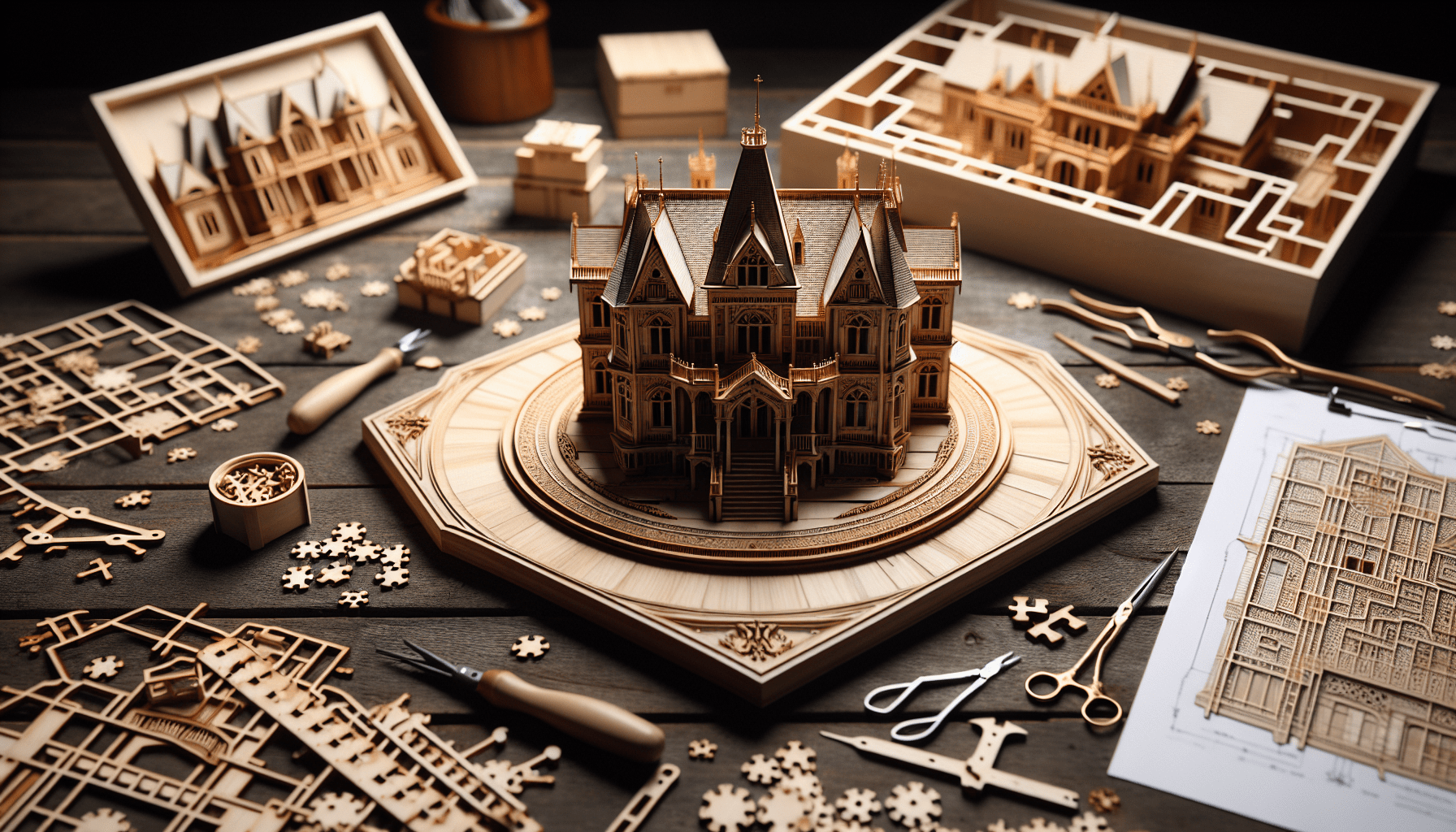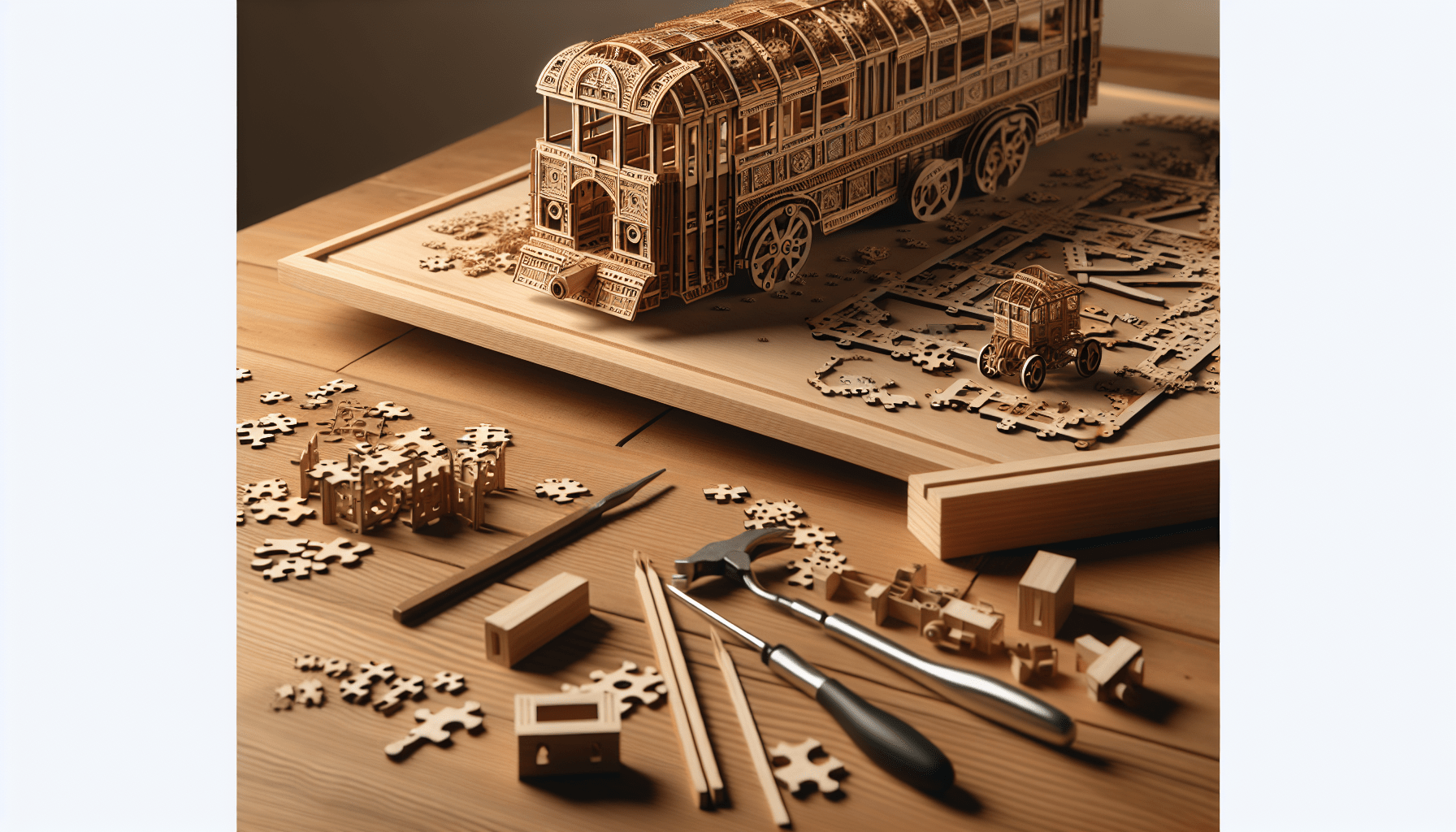Have you ever wondered what sets a 3D wooden puzzle apart from a model kit? Whether you’re a hobbyist or just someone looking for a fun way to spend your free time, understanding the key differences can help you make a more informed choice.
Introduction
Building things with your hands can be incredibly satisfying, and both 3D wooden puzzles and model kits offer this rewarding experience. However, they are not the same thing. Let’s dive into the details of each, look at their unique characteristics, and find out which might be a better fit for your interests.
What is a 3D Wooden Puzzle?
3D wooden puzzles are intricately designed, laser-cut pieces of wood that fit together to create a three-dimensional structure. These puzzles often come in flat-packed sheets with pre-cut parts that you push out and assemble.
History and Origins
3D wooden puzzles have a rich history, rooted in traditional woodworking and carpentry. Initially, they were handmade and carved, but modern versions benefit from advanced technology like laser cutting, which allows for greater precision and complexity.
Popular Brands
Some of the popular brands known for high-quality 3D wooden puzzles include Robotime, Rokr, Ugears, Wood Trick, EWA, Vitascope, Wooden City, and Handmadecity. Each brand offers unique designs and mechanical functionalities, making them popular among enthusiasts.
Types of 3D Wooden Puzzles
- Architectural Models: Often detailed replicas of famous buildings or landmarks.
- Mechanical Models: Functional models that often have moving parts, like gears and rods.
- Animal Figures: Representations of animals that can range from simple to highly detailed.
- Thematic Puzzles: These could include a variety of themes such as vehicles, robots, or everyday objects.
Material and Construction
Most 3D wooden puzzles are made from high-quality plywood or other types of wood. They are cut using laser technology for precision and detail. You’ll generally not need glue, nails, or screws, as the pieces are designed to fit together snugly.
| Aspect | Details |
|---|---|
| Material | High-quality plywood, laser-cut for precision |
| Tools | Usually no additional tools needed |
| Difficulty | Varies from beginner to expert levels |
| Assembly | Pieces fit together without glue or screws |
What is a Model Kit?
Model kits, on the other hand, are often made from various materials like plastic, metal, and sometimes wood. These kits can replicate cars, planes, ships, and even fictional objects. They often require glue, paint, and sometimes specialized tools for assembly.
History and Origins
Model kits originated in the early 20th century, catering mainly to enthusiasts of vehicles and machinery. The early models were relatively simple, but as technology advanced, so did the complexity and accuracy of the kits.
Popular Brands
When it comes to model kits, brands like Tamiya, Revell, Airfix, and Bandai are household names. These brands are known for their wide range of subjects and attention to detail.
Types of Model Kits
- Scale Models: These replicate vehicles, aircraft, ships, and architecture at a smaller scale.
- Fantasy and Sci-Fi: Models of fictional characters, scenes, and vehicles.
- Military Models: Often include tanks, ships, and aircraft used in historical battles.
- Educational Kits: Designed for learning purposes, such as solar system models or anatomical structures.
Material and Construction
Model kits can be quite versatile in terms of materials used. They might include plastic, metal, and occasionally wood or paper. Assembly can require a good deal of preparation, such as gluing, sanding, and painting.
| Aspect | Details |
|---|---|
| Material | Plastic, metal, sometimes wood |
| Tools | Glue, paint, brushes, sometimes specialized tools |
| Difficulty | Varies from beginner to very complex builds |
| Assembly | Requires gluing, painting, and sometimes sanding |

Detailed Comparisons
Let’s break down the comparison even further to help you make an informed decision.
Ease of Assembly
3D wooden puzzles are generally easier to assemble compared to model kits. They often come with detailed instructions and the pieces are designed to fit together without much hassle.
Model kits, meanwhile, can vary widely in their complexity. While some are designed for beginners, others can be quite challenging, requiring a good deal of patience and skill.
| Aspect | 3D Wooden Puzzles | Model Kits |
|---|---|---|
| Tools Needed | None or minimal | Glue, paint, brushes, and sometimes special tools |
| Assembly Time | Relatively quick | Can be lengthy, depending on complexity |
| Skill Level | Suitable for all levels | Wide range, some are quite complex |
Durability
When it comes to durability, model kits tend to have the edge because they are often made from plastic and sometimes metal. 3D wooden puzzles, while sturdy, can be more susceptible to environmental factors like humidity.
| Aspect | 3D Wooden Puzzles | Model Kits |
|---|---|---|
| Material | High-quality wood | Plastic, metal |
| Durability | Good but can be affected by conditions | Excellent, lasts longer |
Creative Flexibility
Model kits offer a lot of creative flexibility. You can paint them, modify them, and even combine parts from different kits to create something unique. On the other hand, 3D wooden puzzles are often quite detailed and pre-designed, offering less room for personal modifications.
| Aspect | 3D Wooden Puzzles | Model Kits |
|---|---|---|
| Customization | Limited | High, can be painted and modified |
| Pre-design | Often pre-designed | Can be customized widely |
Educational Value
Both 3D wooden puzzles and model kits offer substantial educational value. 3D wooden puzzles can teach you about mechanical linkages, structures, and sometimes even historical landmarks.
Model kits can offer learning opportunities related to engineering, aerodynamics, and history, especially if you build replicas of military vehicles and historical aircraft.
| Aspect | 3D Wooden Puzzles | Model Kits |
|---|---|---|
| Learning | Mechanics, architecture | Engineering, history, aerodynamics |
| Age Range | Suitable for children and adults | Usually targeted at older children and adults |

Which One Is Right for You?
Your choice should be based on what you’re looking to get out of the experience. If you enjoy a straightforward but rewarding assembly process, and love the aesthetic and mechanical beauty of wood, a 3D wooden puzzle might be your best bet. However, if you relish the challenge of a more complex build, enjoy painting and customizing your creations, and have a particular interest in the variety of subjects that model kits cover, then a model kit may be more up your alley.
Consider Your Skill Level
When choosing between a 3D wooden puzzle and a model kit, think about your skill level and how much time you’re willing to invest. Beginners might find 3D wooden puzzles to be more accessible, while more experienced builders might enjoy the complexity offered by model kits.
Think About Your Interests
Are you a history buff, a sci-fi enthusiast, or someone who loves architecture? Your interests can guide you toward the better-suited option. For instance, if you enjoy historical landmarks, an architectural 3D wooden puzzle could be very satisfying. If you’re into cars or planes, a model kit might be more enjoyable.
Budget Considerations
Both 3D wooden puzzles and model kits come in a range of prices. Generally, high-quality wooden puzzles can sometimes be more expensive due to the cost of materials and laser cutting technology. Model kits have a wide price range depending on the complexity and materials used.

Conclusion
Understanding the differences between 3D wooden puzzles and model kits can greatly enhance your enjoyment and satisfaction from these hobbies. Both offer unique experiences and cater to different interests and skill levels. Whether it’s the tactile pleasure of fitting together wooden pieces or the intricate detailing involved in assembling and painting a model kit, there’s something deeply rewarding for everyone. Take the time to assess your preferences, interests, and skill levels, and you’re sure to find the perfect product that will keep you engaged and entertained.
So, the next time you’re in the market for a new hobby, you’ll be well-equipped to make the best choice for yourself. Happy building!
